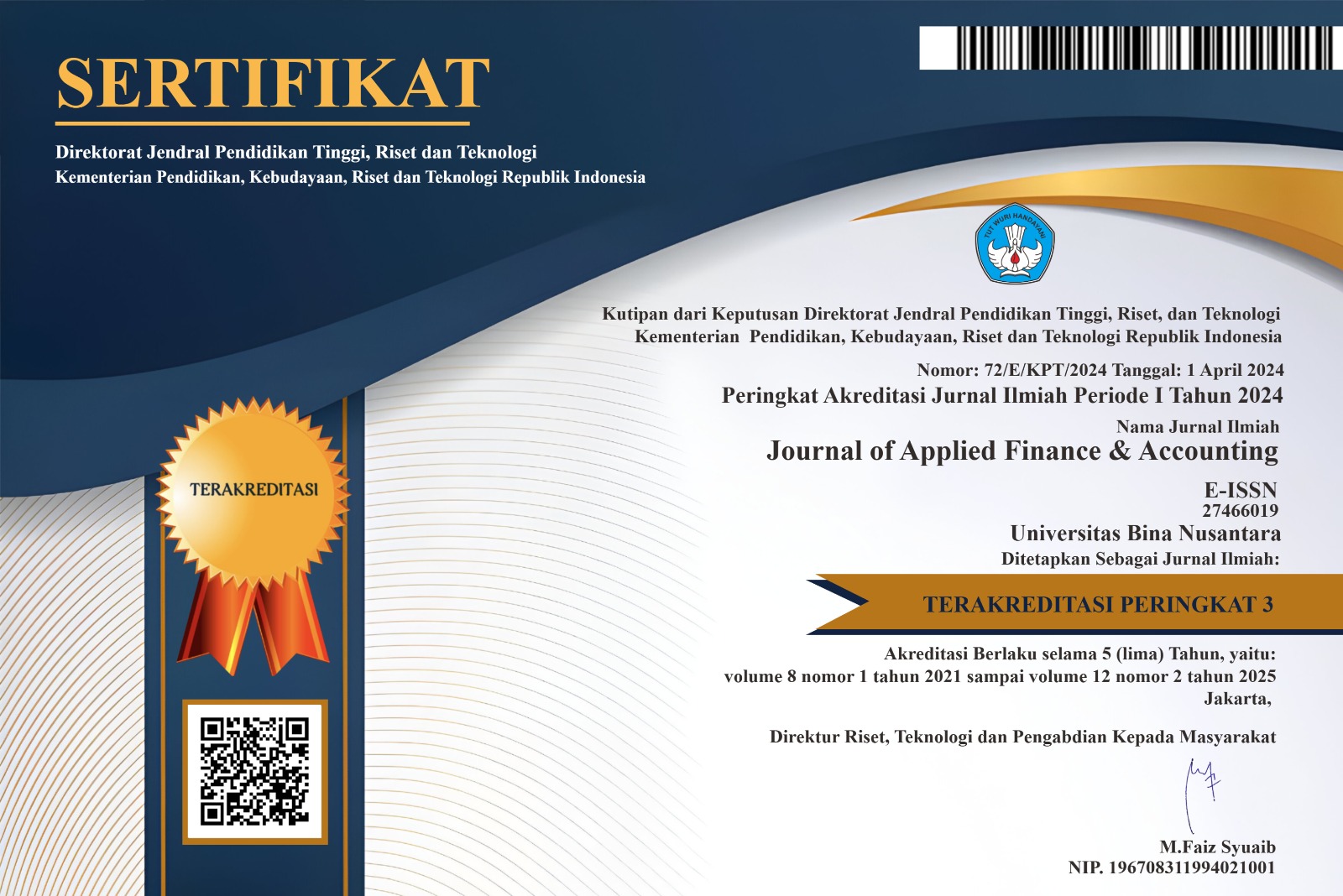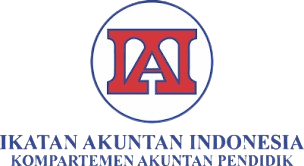VALUE-AT-RISK (VAR) APPLICATION AT HYPOTHETICAL PORTFOLIOS IN JAKARTA ISLAMIC INDEX
DOI:
https://doi.org/10.21512/jafa.v3i2.168Keywords:
value at risk, market risk, historical simulation, Jakarta Islamic Index.Abstract
The paper is an exploratory study to apply the method of historical simulation based on the concept of Value at Risk on hypothetical portfolios on Jakarta Islamic Index (JII). Value at Risk is a tool to measure a portfolio’s exposure to market risk. We construct four portfolios based on the frequencies of the companies in Jakarta Islamic Index on the period of 1 January 2008 to 2 August 2010. The portfolio A has 12 companies, Portfolio B has 9 companies, portfolio C has 6 companies and portfolio D has 4 companies. We put the initial investment equivalent to USD 100 and use the rate of 1 USD=Rp 9500. The result of historical simulation applied in the four portfolios shows significant increasing risk on the year 2008 compared to 2009 and 2010. The bigger number of the member in one portfolio also affects the VaR compared to smaller member. The level of confidence 99% also shows bigger loss compared to 95%. The historical simulation shows the simplest method to estimate the event of increasing risk in Jakarta Islamic Index during the Global Crisis 2008.
Downloads
Published
Issue
Section
License
Authors who publish with this journal agree to the following terms:
Authors retain copyright and grant the journal right of first publication with the work simultaneously licensed under a Creative Commons Attribution License that allows others to share the work with an acknowledgement of the work's authorship and initial publication in this journal.
Authors are able to enter into separate, additional contractual arrangements for the non-exclusive distribution of the journal's published version of the work (e.g., post it to an institutional repository or publish it in a book), with an acknowledgement of its initial publication in this journal.
Authors are permitted and encouraged to post their work online (e.g., in institutional repositories or on their website) prior to and during the submission process, as it can lead to productive exchanges, as well as earlier and greater citation of published work (See The Effect of Open Access).




